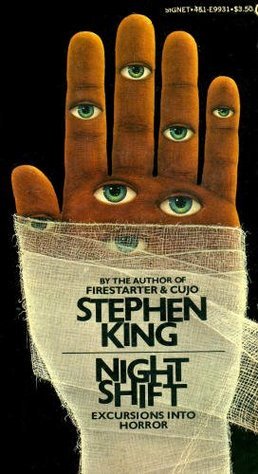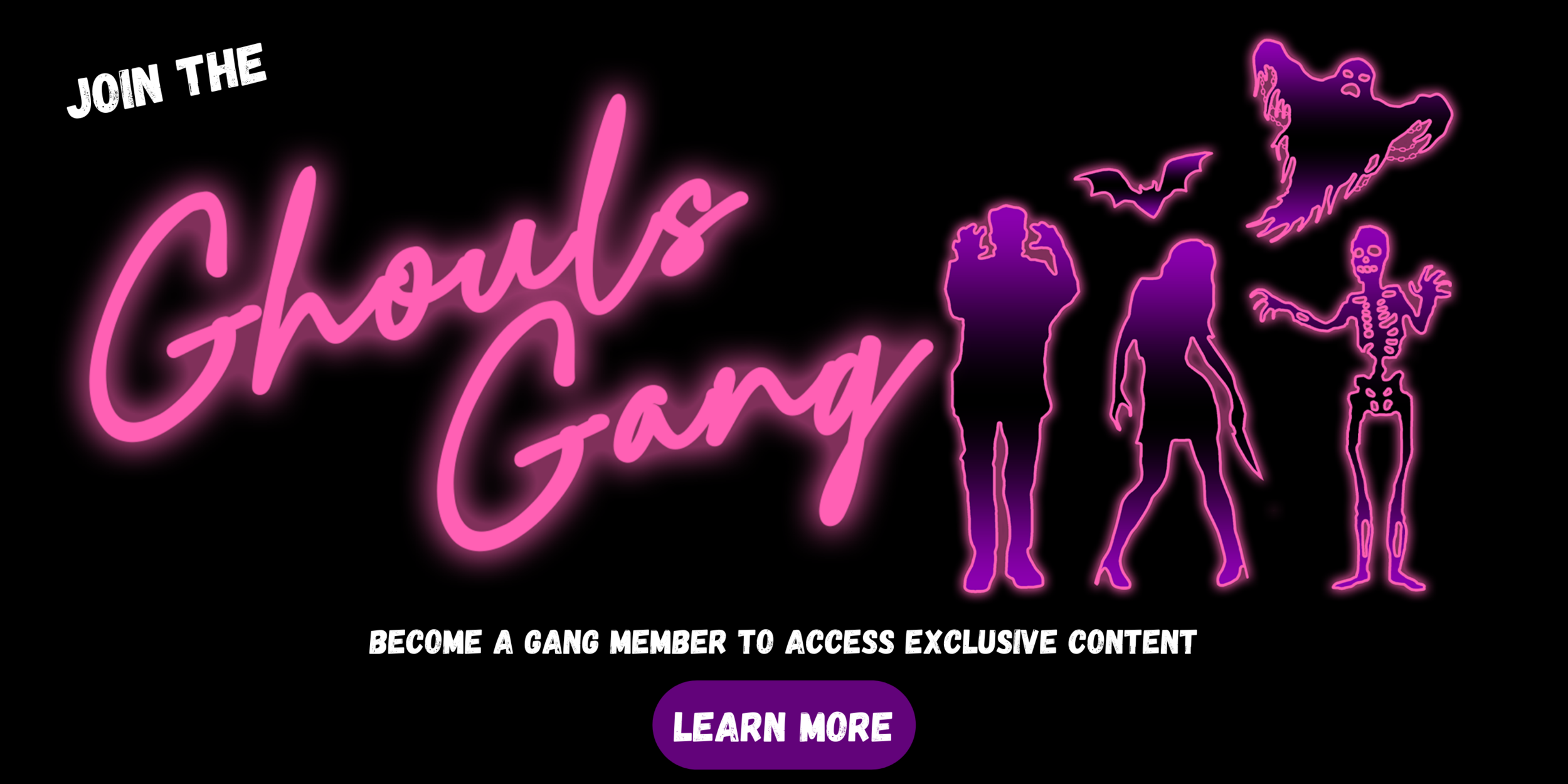[Editorial] I’m Your No.1 Fan: Stephen King Short Stories
In the last decade or so there has been a resurgence of interest in Stephen King's works. New adaptations of older novels like IT and Pet Sematary, and first-time film versions of newer works such as Doctor Sleep have maintained a prominent place for King's own writing in popular culture.
There has also been a number of popular and acclaimed works by horror creators who have been strongly influenced by King, notably the Mike Flanagan series Midnight Mass and the Duffer brothers' Stranger Things. The themes that these works draw from King are those that are generally considered to be his hallmarks - small town life, supernatural threat and facing down corrupt institutions. These elements come up often in King’s novels, but his short stories show his ability and willingness to step outside his usual genre boundaries, often venturing into much weirder and bleaker territory.
King’s forays into science fiction in his novels have generally not been well-received. These works have tended to involve slightly overblown alien invasion concepts, like the buried spaceship imparting superpowers to local residents in The Tommyknockers,a crash-landed spacecraft with psychic aliens in Dreamcatcher and a mysterious extraterrestrial forcefield in Under The Dome. The focus tends to be on the people affected, and while the sci-fi element is crucial to the plot, it could plausibly be replaced by a different threat with little difference to the overall story. By contrast, King’s short sci-fi stories have the genre as an inherent part - being set in off-world locations or utilising futuristic concepts.
The Jaunt is a classic tale of scientific curiosity gone horribly wrong. In a departure lounge, a father passes the time by telling his children the story of how the teleporter they’re about to use was invented. He slightly glosses over the disturbing results of the experimental Jaunts involving conscious animals, and his son Ricky decides to undertake an experiment of his own by staying awake by not inhaling the sedative gas. Having the tragedy occur well after teleportation has become commonplace is an intriguing twist on the “dangerous invention” plot and gives it an even more disturbing slant. When a fictional invention goes wrong at the early stages, the audience is assured that the dangerous new thing will then be safely tucked away, serving as a cautionary tale. Jaunting, in contrast, has become a lynchpin of a whole new economy. It’s also been used as a tool for body disposal and murder, which hasn’t restricted its use very much. It seems inevitable that jaunting’s usefulness for economic expansion will lead to Ricky's horrific death being kept quiet, and so the terrifying possibility remains – this could happen again.
In Night Shift and Skeleton Crew are two sci-fi tales centred around the horrors of space travel and bodily invasion - “I Am The Doorway” and “Beachworld”.
In “I Am The Doorway” an ex-astronaut, Arthur, recounts the changes in himself following an expedition to Venus. His hands have begun to itch terribly, and one day he sees to his horror that tiny eyeballs have appeared on his fingers. He believes that an alien intelligence has entered his body, and is using him as a conduit to commit acts of violence. Written less than ten years after the moon landings, “I Am The Doorway” takes a dour view of space travel. The effect on Arthur is shown to have been both physically and emotionally traumatic - while orbiting Venus he is strongly disturbed by the sight of the planet, and the landing on Earth leaves him severely injured. In a sinister inversion of the Overview effect, Arthur begins to feel his perception merging with the aliens’, seeing humanity as inherently vile and repugnant.
“Beachworld” takes place on an unnamed, sand-logged planet where a two-man crew has crash landed. Whilst one of them, Shapiro, tries to set about maintaining their survival, his shipmate Rand is immediately drawn to the everlasting dunes, and falls into a form of catatonia. Their different attitudes to the sand reflect their contracting reactions towards their perilous situation. Rand fatalistically accepts his death, refusing to eat or drink, while Shapiro battles against the fate that seems inevitable.
While King is known for gruesome and gory imagery, and uses gross-out moments as something of a staple, he’s not usually associated with actual body horror. In several of his stories, though, the body is the focus and prime location of fear.
“Grey Matter” deals with the common King theme of substance abuse and addiction, in a story of bodily metamorphosis. A teenage boy becomes concerned about his father after the latter drinks a batch of bad beer and begins a metamorphosis, unable to bear light and becoming covered in colourless sludge. While he is withdrawn and neglectful, the father’s physical isolation is not enough to prevent the grey matter from spreading - and in the final scene a character notices with horror an eye in the gelatinous form that is splitting and multiplying - threatening exponential reproduction. As his transformed body grows and threatens to take over his environment, the consequences of the father’s actions will also ripple out and affect his family and community.
“The Moving Finger” is one of King’s more surreal offerings. Howard Mitla visits the very ordinary bathroom of his New York apartment, only to find a finger poking out of the basin drain. Fairly logically, Howard decides that he must be hallucinating, which interestingly leads the story in the direction of a different kind of body horror - that of extreme health anxiety. He becomes terrified by the idea that he has imagined the finger, but the alternative - that it is actually there - may be worse. The bathroom as a site of body horror is a theme that features graphically in Dreamcatcher, and in interviews King has specifically mentioned the notion of the bathroom as a sight of bodily horror and fear - a place that you may discover, whilst all alone, something going terribly wrong with your own body.
In recent years King has published several crime novels - The Colorado Kid, Joyland, Later and the Mr Mercedes series - but it is not a genre with which he’s been associated for most of his career. In Night Shift, though, are a pair of stories that show King’s affinity for noir fiction and also form a miniature shared universe. “Battleground” and “The Ledge” both centre around revenge plots and feature a shadowy outfit called “The Organization”. In “The Ledge”, a man in love with a crime boss’s wife finds himself forced to take a bizarre bet - to walk around the narrow ledge outside the boss’s penthouse apartment. King peppers the story with some signature horror moments - a vicious pigeon attack, and painful descriptions of muscle stress - and gives it a neat table-turning twist at the end. The concept of “Battleground'' is an absurd one - sentient toy soldiers besiege a contract killer in his apartment - but it is played entirely straight, and it becomes a weirdly tense standoff as the toys demonstrate their combat prowess. With large doses of treachery, betrayal and suspect morals, these early stories show the early seeds of King’s later-career crime fiction run.
A few of King’s stories have quite well-known adaptations, but have a distinctly different tone on the page. The Children of the Corn, with its innumerable sequels, has become seen as slightly absurd. The original story still carries a huge amount of menace - there is almost no humaning interpersonal conflict between the children, just a zealous and unflinching determination to do the bidding of their bloodthirsty deity. The Creepshow 2 segment “The Raft” stays faithful to the plot of the original, but is firmly in the style of a slasher flick. The final part of the Skeleton Crew story takes a sharp turn away from the teen drama elements, and ends with the last survivor gazing into the hypnotic colours of the thing on the water in a bid to make his inevitable death less painful, whispering to it “Do you love?” “The Raft” works as a kind of companion piece to “Beachworld” in the same collection - both seeing elements of the natural landscape rising up, becoming sentient and consuming the humans upon them.
King has continued publishing short story collections throughout his career, and it is here that he has explored a wide range of themes, forms and subgenres. King shorts also have a unique place in horror cinema through his “Dollar Baby” scheme, whereby aspiring filmmakers can buy permission to adapt a story for $1. In the dark forest of King’s work the stories are the creeping vines; weaving their way among the larger trees they’re less noticeable - but just as liable to trip up and scare the unsuspecting Constant Reader.






![[Editorial] Soho Horror Film Festival: Interview with Aimee Kuge on Cannibal Mukbang](https://images.squarespace-cdn.com/content/v1/5fe76a518d20536a3fbd7246/1701808004722-9M8SZ2UXY52QBQBR4NTI/img20230818_15150780.JPG)
![[Editorial] 9 Horror Nintendo Switch Games To Play](https://images.squarespace-cdn.com/content/v1/5fe76a518d20536a3fbd7246/1697214470057-3XZXX8N4LYIMDFWS6Z3P/Screenshot+2023-10-13+at+17.20.13.png)
![[Mother of Fears] Mothering in Silence in A Quiet Place (2018)](https://images.squarespace-cdn.com/content/v1/5fe76a518d20536a3fbd7246/1696445921315-HZJ2DZYQIH6VVWXBO2YL/Screenshot+2023-10-04+at+19.52.29.png)
![[Event Review] Highlights from Mayhem Film Festival 2023](https://images.squarespace-cdn.com/content/v1/5fe76a518d20536a3fbd7246/1697624582491-MPT2VB9RRGU6OG7L6UKL/Mayhem+2023.jpg)
![[Editorial] Mayhem Festival: Interview with Thomas Sainsbury on Loop Track (2023)](https://images.squarespace-cdn.com/content/v1/5fe76a518d20536a3fbd7246/1697186472899-WC4RR0TW7L7LMFEBGPA2/Tom+Sainsbury.jpg)
![[Editorial] Keeping Odd Hours: A Retrospective on Near Dark (1987)](https://images.squarespace-cdn.com/content/v1/5fe76a518d20536a3fbd7246/1696445070868-HU9YIL3QPBCL1GW47R3Z/Screenshot+2023-10-04+at+19.36.53.png)
![[Editorial] 5 Female Focused Horror Book Recommendations](https://images.squarespace-cdn.com/content/v1/5fe76a518d20536a3fbd7246/1696441981361-52EQCTJ7AT2QF1927GM7/919xtm6d3fL._AC_UF894%2C1000_QL80_.jpg)
![[Editorial] What to Watch at This Year's Cine-Excess International Film Festival 2023](https://images.squarespace-cdn.com/content/v1/5fe76a518d20536a3fbd7246/1697213510960-REV43FEOZITBD2W8ZPEE/Screenshot+2023-10-13+at+17.01.15.png)
![[Editorial] Cherish Your Life: Comfort in the SAW Franchise Throughout and Beyond the COVID-19 Pandemic](https://images.squarespace-cdn.com/content/v1/5fe76a518d20536a3fbd7246/1695487675334-MYPCPYYZQZDCT548N8DI/Sc6XRxgSqnMEq54CwqjBD5.jpg)























![[Editorial] 10 Films & Events to Catch at Soho Horror Film Fest 2023](https://images.squarespace-cdn.com/content/v1/5fe76a518d20536a3fbd7246/1700819417135-299R7L4P0B676AD3RO1X/Screenshot+2023-11-24+at+09.41.52.png)
![[Editorial] 9 Best Slashers Released Within 10 Years of Scream (1996)](https://images.squarespace-cdn.com/content/v1/5fe76a518d20536a3fbd7246/1695478839037-LOFHGVM3H6BMSZW7G83M/Screenshot+2023-09-23+at+15.15.11.png)
![[Mother of Fears] Mother Vs. Monster in Silent Hill (2006)](https://images.squarespace-cdn.com/content/v1/5fe76a518d20536a3fbd7246/1695485781119-H6GNP0G3J2TLPAOIABV7/Screenshot+2023-09-23+at+17.11.56.png)
![[Editorial] 9 Terrifying Cerebral Visions in Horror Movies](https://images.squarespace-cdn.com/content/v1/5fe76a518d20536a3fbd7246/1693509801235-X23OL50T1DVGECH0ZJK2/MV5BMjQ0MTg2MjQ4MV5BMl5BanBnXkFtZTgwMTU3NDgxMTI%40._V1_.jpg)
![[Mother of Fears] I Don’t Wanna Be Buried in a Pet Sematary (1989) and (2019)](https://images.squarespace-cdn.com/content/v1/5fe76a518d20536a3fbd7246/1691328766069-QFNAVJOMFZVZ5CLU1RWM/Screenshot+2023-08-06+at+14.23.13.png)
![[Mother of Fears] How I Love to Love Nadine in The Stand (2020)](https://images.squarespace-cdn.com/content/v1/5fe76a518d20536a3fbd7246/1690213172707-TKM9MZXK02EVCIX30M1V/Screenshot+2023-07-24+at+16.29.11.png)
![[Editorial] 11 Best Werewolf Transformations in Horror Films](https://images.squarespace-cdn.com/content/v1/5fe76a518d20536a3fbd7246/1689240234098-HUPQC6L57AAHFJNT8FTE/Screenshot+2023-07-13+at+10.09.13.png)

Now it’s time for Soho’s main 2023 event, which is presented over two weekends: a live film festival at the Whirled Cinema in Brixton, London, and an online festival a week later. Both have very rich and varied programmes (with no overlap this year), with something for every horror fan.